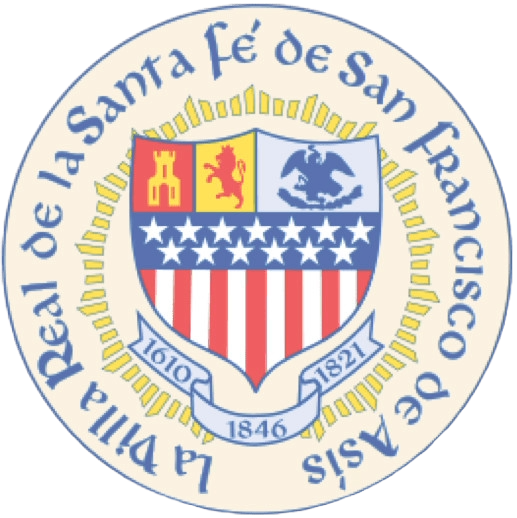What does it mean to have “community”?
The arrival of the 100th anniversary of Indian Market prompted this question. Seeing so many Native artists from across the country, enjoying the energy and zeal of eager collectors who come from around the world to purchase the remarkable work of these artists—it was obvious that Indian Market is a vibrant community, in spite of the fact that most of its members don’t actually know each other, may not see each other until next year, if then. But for the special days of Indian Market, there is no doubt that they feel like, act like, want to be, and in fact are, a community.
The same should be said about the Folk Art Market, the Spanish Market, the Opera, Zozobra, Fiesta, Wine & Chile. All are defined by shared passion, shared interest, shared sensibilities. Some may have more permanence—people work the entire year to help put on a weekend that brings together the whole community. Some may express common interests born from shared experiences in a shared place: I’m thinking of the rousing success that was Thursday’s Feria on the Southside that brought together neighbors, vendors, small businesses, non-profits, musicians, and more, a community of Southside residents, friends, and family.
Clearly, a community can be a neighborhood, a faith-based group, a non-profit organization with a mission and a purpose. It can be organized around a cause, a place, an experience, a passion, or a business. It can come together in great celebration. It can come together to mourn in times of loss or sadness.
For the past two-and-a-half years, community has been tested and tried. COVID and the isolation it caused frayed the fabric of community. We all suffered loss, often without the support and comfort that community provides. It was harder than ever to connect with each other. Simply to stay in touch, to feel in touch—to actually touch each other—was made unbelievably difficult.
Without that human touch, we ran the risk of losing community. Because at its core, community is about caring for, listening to, having empathy for, and demonstrating understanding of others. Community is never about “Me.” It only happens when we care about “others.” And then “me” and “others” come together to become “us.”
During the worst of COVID, Santa Fe was at its best as a community. We took in strangers and called them “friends we haven’t met yet.” We fed our hungry neighbors, whether we knew them by name or not. We bought food for seniors who were homebound because even going to the supermarket was a threat to their well-being. We read to kids who weren’t our own, because not going to school was making their lives hard and taking away the fun of learning. We contributed money to help the organizations that selflessly helped others.
Better than any place in America, Santa Fe kept community during the hardest days of COVID.
Now that we are coming through to a new place of community health—in terms of COVID—it’s time for all of us to re-dedicate ourselves to community health in the most fundamental terms of all: our sense of community, the health of our community.
What does it mean to have “community”?
It means that we express our shared values, more than ever, every day: Respect for all.
It means we look out for those among us who have the least, as we did during COVID.
It means we look out for those among us who feel afraid, unsafe, unheard, ignored, left out, left behind.
It means that we express our gratitude and support for those among us who do for others as they would have done to them: our volunteers, our teachers, our first responders, our philanthropists, our faith leaders, our community outreach workers.
It means we take responsibility to pitch in and make our community better, in ways large and small.
A simple example: Someone who is standing outside community points a finger at a problem. Someone who is standing inside community lends a hand to solve the problem.
Every one of us can make a difference. When we do, we create community.
We are all blessed to live in this community. We are all responsible for making this a healthy, thriving community for all of us.
As we say a loving and grateful “Thank you” to those in our community who have brought us the 100th Indian Market, let us also say a loving and grateful “Thank you” to those in our community who are preparing to bring us this year’s Fiestas.
In the end, we are many diverse communities, bound together into one unique, thriving, vibrant, remarkable community—Santa Fe.
